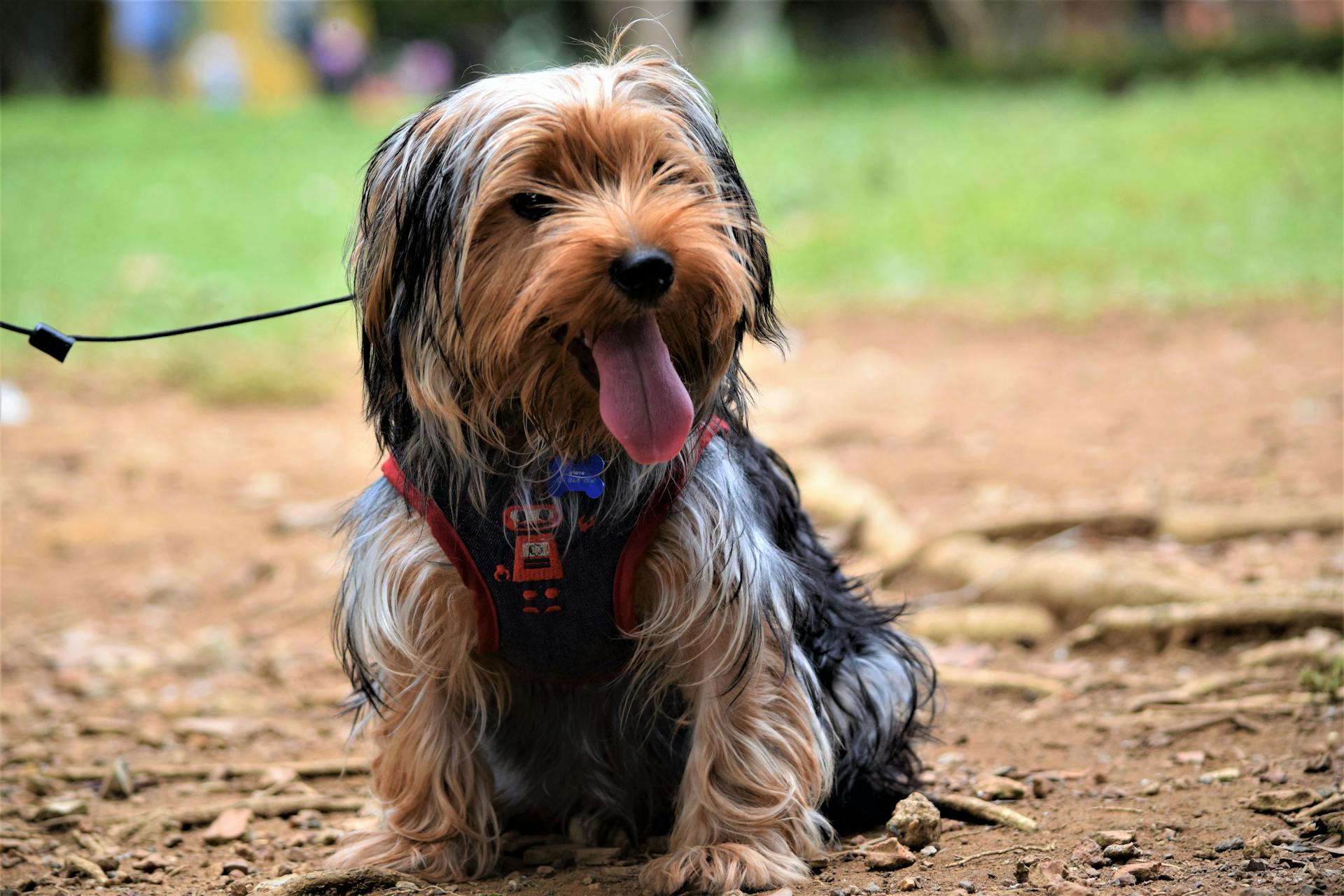
The Jämthund is a remarkable Nordic dog breed with a rich history and unique characteristics. They originated in Sweden over 600 years ago.
Their original purpose was to hunt large game such as elk and bear. This is evident in their strong prey drive and instinct to pursue and chase.
Jämthunds are a medium-sized breed with a muscular build and a distinctive wolf-like appearance. They typically weigh between 70-100 pounds and stand 24-27 inches tall at the shoulder.
Their thick double coat, made up of a soft undercoat and a coarse outer layer, helps them thrive in Sweden's harsh winter climate.
History and Origins
The Jämthund has a rich history dating back over a thousand years to the north of Sweden. It was used to hunt moose, bears, and lynxes, and was prized for its strength, endurance, and ability to withstand harsh Arctic conditions.
The breed was initially used as a working dog and was bred to hunt big game. It was also used to serve as a companion dog in the Jamtland region of Sweden.
Worth a look: How to Train a German Shorthaired Pointer to Hunt
The Jämthund was recognized as a breed in 1946, after being previously judged as the same breed as the Gray Norwegian Elkhound. This was due to the fact that the Jämthund and the Gray Norwegian Elkhound shared similar characteristics, but were eventually found to be distinct breeds.
The Jämthund is part of the Nordic Hunting Dogs group, which includes other breeds such as the Gray Norwegian Elkhound and the Black Norwegian Elkhound. These breeds are all part of the original type (group 5) and are assigned to section 2 of the FCI standard.
Here are some key facts about the Jämthund's history and origins:
- Alternate Name: Swedish Elkhound
- Origin: Sweden
- Life expectancy: 10 - 15 years
- Care requirements: low-maintenance
- Activity level: high
- FCI group: Nordic Hunting Dogs
- AKC group: not recognised
- KC group: not recognised
Breed Characteristics
The Jämthund is a robust and powerful breed, standing between 57 to 65 centimeters tall at the cross and weighing around 30 kg.
Their wolf-like appearance is a testament to their hunting heritage. They are the largest and heaviest of the three moose dogs recognized.
In terms of exercise needs, Jämthunds require a lot of physical activity to keep them happy and healthy. They are bred to hunt large game and need space to roam and run.
Their independent nature means they can be stubborn at times, but with patience and consistency, they can be trained to be versatile companions and working dogs.
Here are some key characteristics of the Jämthund breed:
As a family dog, Jämthunds are friendly, balanced, and calm, making them suitable for families with children. However, they do have a natural instinct for vigilance and protection, which means they may be wary of strangers at first.
Physical and Temperament Characteristics
The Jämthund is a robust dog with a wolf-like appearance and a powerful stature. He stands tall, with a height at the cross of 57 to 65 centimeters and a weight of about 30 kg.
This Nordic hunting dog is the largest and heaviest of the three moose dogs recognized. He has a strong physical presence that commands respect.
Despite his intimidating size, the Jämthund is a friendly and calm breed, fond of children and suitable for families with small kids. He's also a patient breed that doesn't get annoyed easily, making him a stable companion.
His independent nature and great desire for freedom mean he requires enough space to roam and exercise. He's not suited for apartment living, but for those who can provide the necessary space, he makes a loyal and loving companion.
Physical Characteristics
The Jämthund is a large and powerful dog, with a height at the cross of 57 to 65 centimeters and a weight of about 30 kg.
Its robust build makes it the largest and heaviest of the three moose dogs recognized, and the largest Nordic hunting dog.
The Jämthund's wolf-like appearance is a testament to its origins and its ability to thrive in the wilderness.
Its size and strength allow it to face predators like wolves, lynx, and elk, as well as adult bears, with fearlessness when hunting.
A fresh viewpoint: English Mastiff Largest Dog
The Nature: A Personality
The Jämthund is a strong-willed breed that doesn't take kindly to blind obedience.
This independent nature is rooted in its centuries-old history as a hunting dog, where it had to rely on its own instincts and bravery to track and catch prey.
As a result, the Jämthund is not a good fit for beginners who are new to dog ownership.
It needs a handler who is experienced, patient, and willing to put in the time and effort to train it.
The Jämthund's strong personality is also reflected in its desire for freedom and its tendency to be wary of strangers.
However, with the right training and socialization, it can become a loyal and loving companion.
This breed is capable of forming harmonious relationships with children and other pets, but it does require plenty of exercise and mental stimulation to prevent boredom and destructive behavior.
In fact, the Jämthund needs a lot of exercise, including long walks, bike tours, and riding tours, as well as a task to keep it occupied.
If it's well-exercised and mentally stimulated, it can become a good family dog that accepts children and other pets.
But if it's not given enough space and activity, it can become restless and destructive.
So, if you're considering bringing a Jämthund into your family, be prepared to provide plenty of exercise, training, and attention.
Care and Maintenance
The Jämthund's coat is a beautiful thing, but it does require some regular maintenance to keep it looking its best. The waterproof coat repels dirt and moisture well, but still needs to be brushed daily, especially during the layer change phase.
You'll want to get into a regular routine of brushing your Jämthund's hair daily, as this will help remove dead hair and keep the amount of hair in your home under control. This is especially important during the layer change phase.
Trimming your Jämthund's claws regularly is also a must to avoid injury. You should aim to trim them every few weeks.
Care
Regular grooming is essential for the Jämthund. It's best to comb their hair daily, especially during the layer change phase, to remove dead hair.
The Jämthund's waterproof coat repels dirt and moisture well, but still needs regular brushing. This helps prevent excessive shedding in your home.
Trimming your Jämthund's claws regularly is crucial to avoid injury. Aim to trim them about two or three times a week.
Cleaning your Jämthund's ears and teeth at regular intervals is also important. This should be done about two or three times a week.
Dog Food Requirements
The Jämthund's diet should consist mainly of meat, which should make up at least 80 percent of their diet.
Meat is the most important energy supplier for Jämthunds, as they are descendants of wolves.
The right composition of food is crucial, and it depends on individual criteria such as weight, age, activity level, and health status.
You should prioritize the price of ingredients over the price of food itself, as the most expensive option isn't always the best.
Vegetables, fruits, and fats should complement the meat in a Jämthund's diet to provide an optimal supply of nutrients.
A unique perspective: Pug Dog Breed Price
Frequently Asked Questions
Are there any Swedish dog breeds?
Yes, Sweden has 11 national dog breeds, with 8 fully recognized by the F.C.I. and one more in the process of gaining recognition.
What kind of dog is used for moose hunting?
Moose hunting often employs specific breeds of spitz-style dogs, such as Jämthund, Gråhund, Karelian Bear Dogs, and Siberian Lajkas. These breeds are well-suited for the task due to their hunting instincts and abilities.
Where did the Swedish Elkhound come from?
The Swedish Elkhound originated from prehistoric times in northern Sweden, with ancestry dating back to colonization from Norway and Finland. Its ancient roots are closely tied to the Norwegian Elkhound and other similar breeds.
Featured Images: pexels.com


